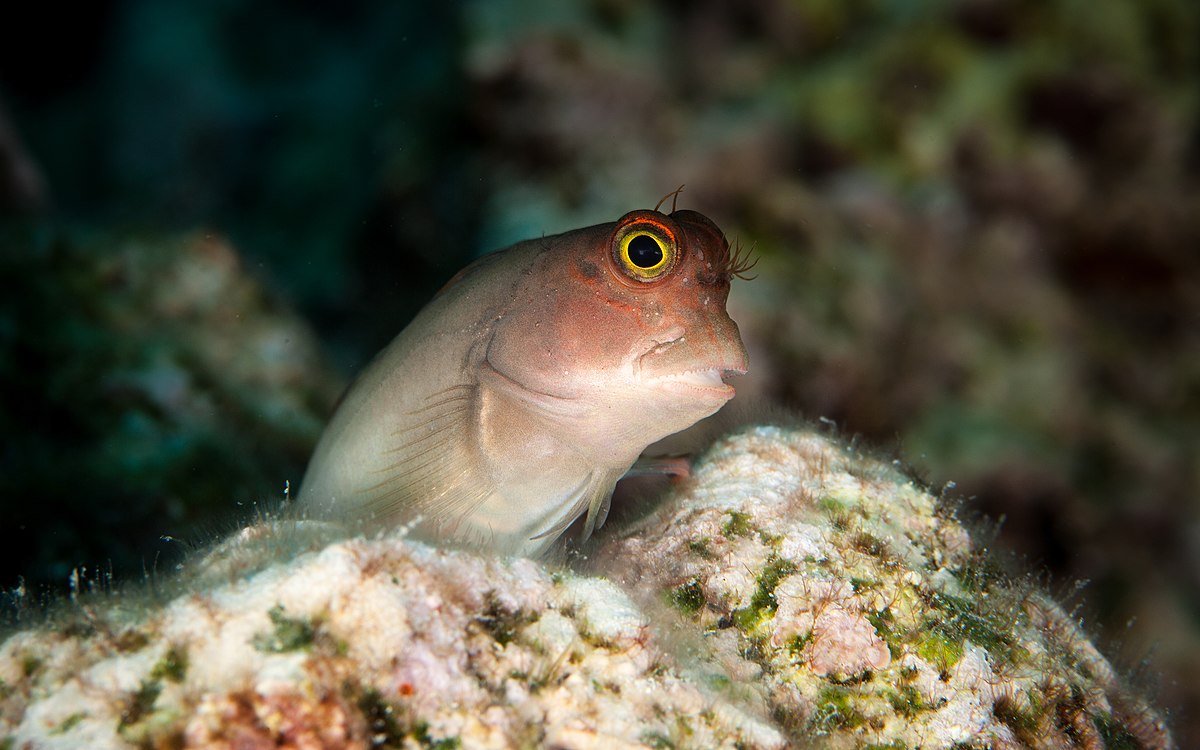
Here’s the transformed content into rich, semantic HTML5:
“`html
Red Lipped Blennie (Ophioblennius atlanticus)
Species of fish

” alt=”Red Lipped Blennie” />
The Ophioblennius atlanticus, also known as the redlip blenny and the horseface blenny, is a species of combtooth blenny“>combtooth blenny, part of the family Blenniidae“>Blenniidae. It is primarily found in the western central Atlantic“>Atlantic ocean. Redlip blennies inhabit coral crests and shallow fringing reefs, displaying highly territorial behavior and attacking intruders with their two long, sharp canine“>canine teeth.
Physical Characteristics
Adults can reach up to four inches in length and exhibit a chocolate brown appearance with some yellow markings. They possess blunt heads featuring four branching horns and large reddish lips, which give them their name. A paler variation has a shell-white body and reddish brown head.
Distribution and Habitat
Ophioblennius atlanticus is native to the tropical marine environments of the central Atlantic Ocean“>Atlantic Ocean. Its range extends to the eastern Atlantic from Senegal to Angola, including offshore islands, and it is confined to the Macaronesian“>Macaronesian archipelagos of the Canary Islands“>Canary Islands, Madeira“>Madeira, and the Azores“>Azores.
In the western Atlantic, it is found off Bermuda“>Bermuda and the shores of North Carolina“>North Carolina south through the West Indies“>West Indies to Brazil. This species is primarily found at depths of 10 to 20 meters and is mostly located in shallow, clear waters with coral reefs and rock bottoms.
Feeding and Behavior
Redlip blennies primarily feed on algae“>algae, but they also consume zooplankton“>zooplankton and other invertebrates. Their ability to jump allows them to navigate between tide pools, necessitating a lid in aquarium settings. These fish can be peaceful when kept in community tanks, though they should not be housed with similarly shaped species.
Reproduction
Redlip blennies reproduce year-round, primarily in the ten days before and four days after the full moon each month. Males prepare nests for depositing eggs and often have multiple nests that they guard and care for until the eggs hatch into planktonic larvae.
Territorial Behavior
Redlip blennies exhibit aggressive territorial behaviors to defend resources such as food, shelter, and spawning sites. Their territoriality is most pronounced towards conspecifics, leading to fierce competition for resources.
“`
### Key Features of the HTML Code:
– **Semantic Structure**: The document uses `